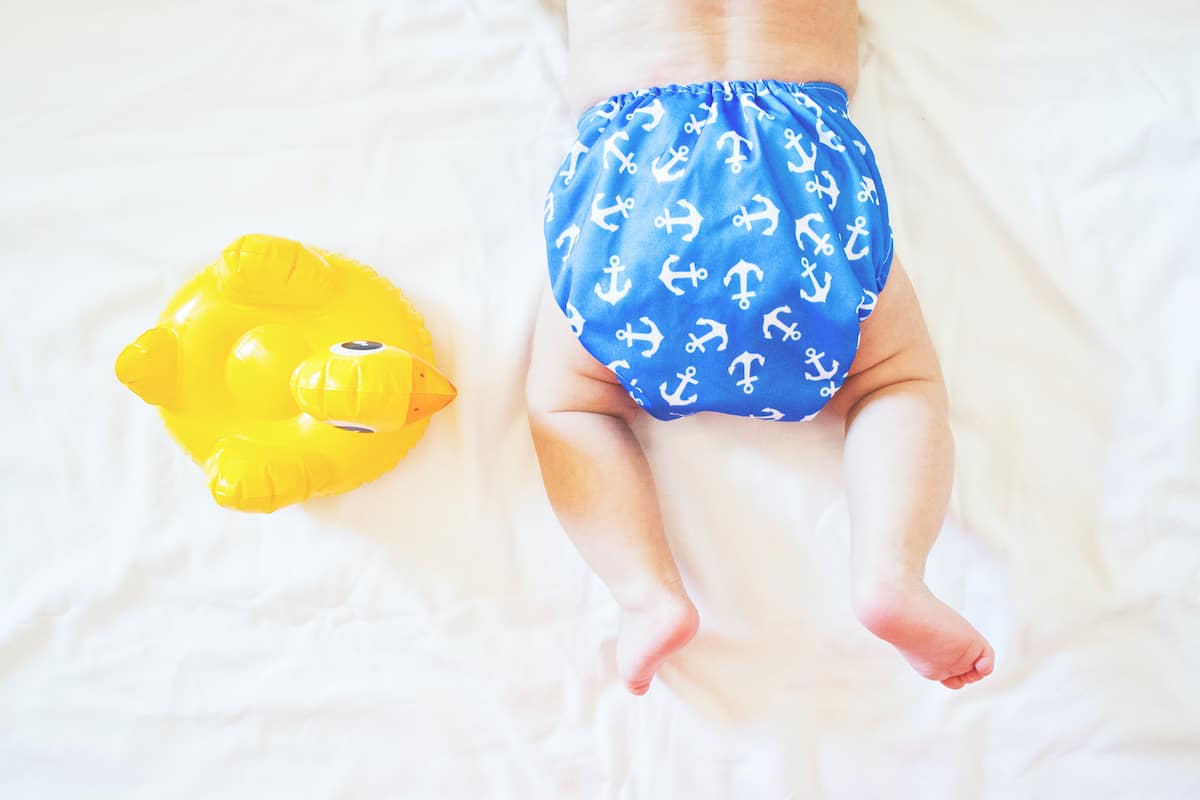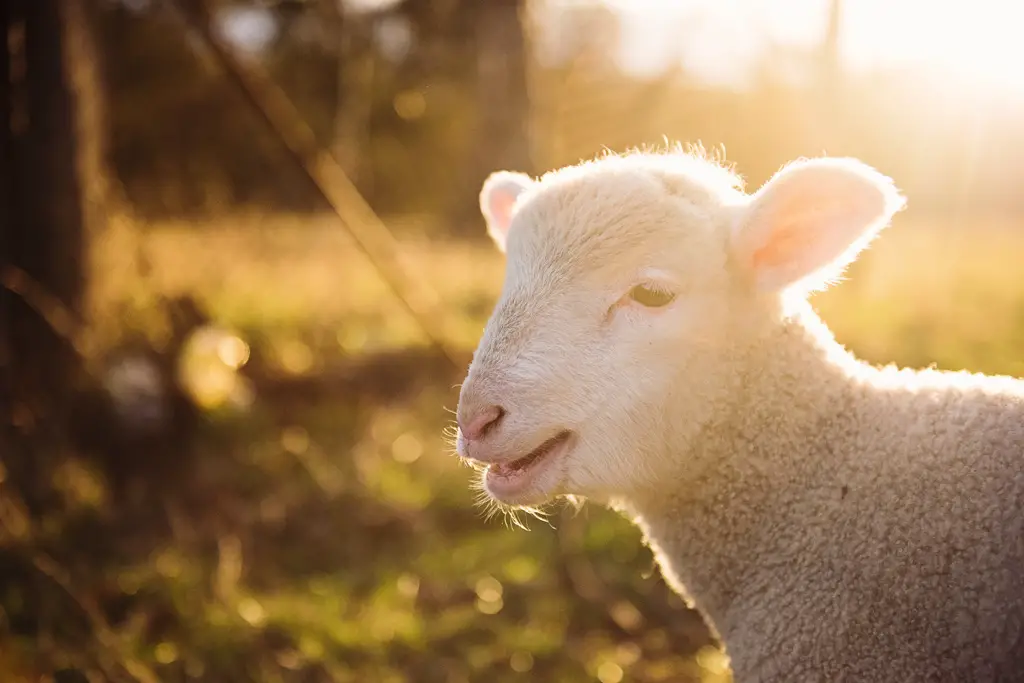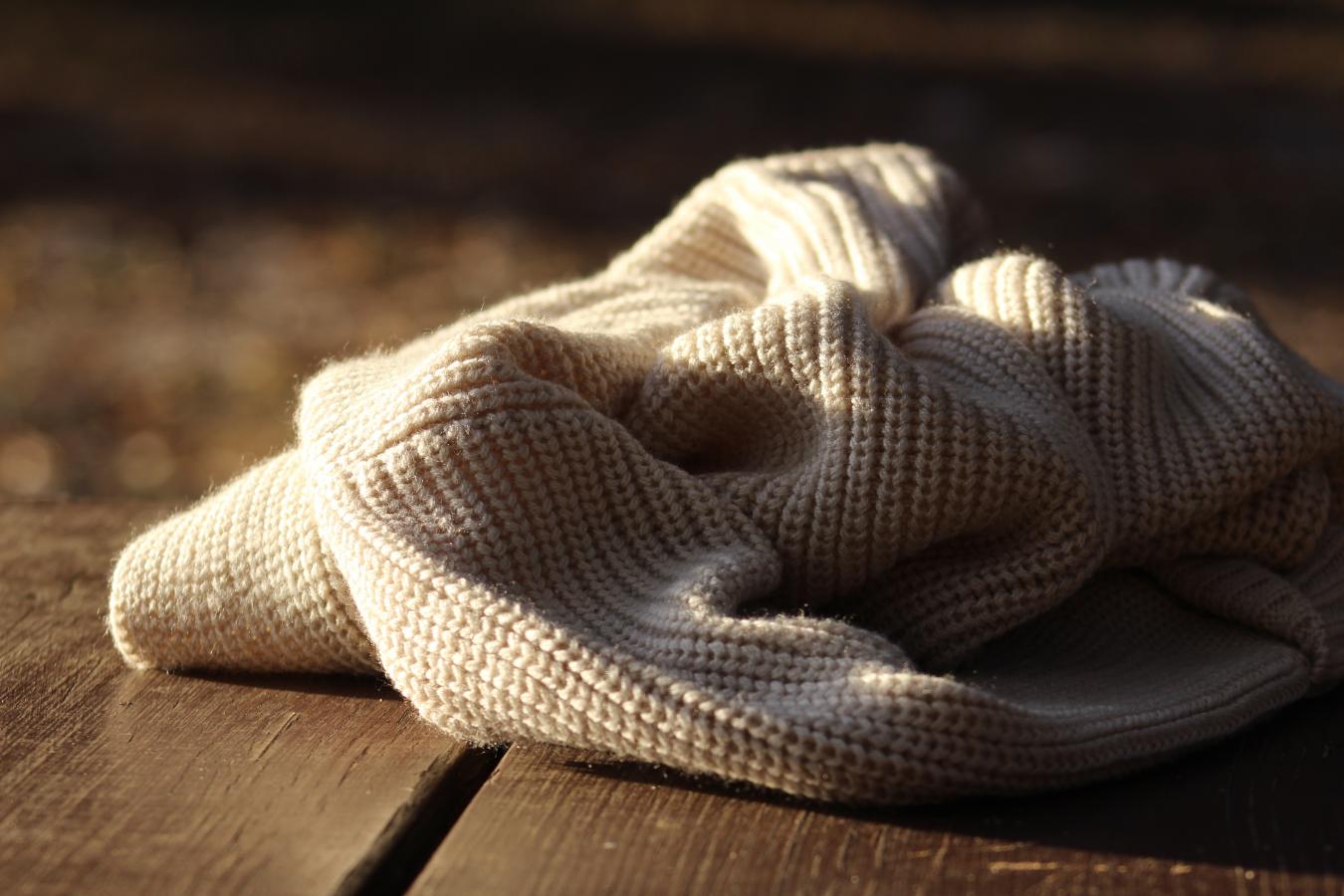When I first heard that wool was a popular choice for diaper covers, I have to admit that I knew very little about this concept.
The first idea was to use an old sweater my grandfather had given me, the same one he wore many years back while living in Germany.
Although the sweater was quite colorful and attractive, it felt a little bit itchy and uncomfortable.
It was impossible to wear it without first placing a turtleneck undershirt beneath it, especially one with long arms that extended beyond the arm length of the sweater. It was that bad!
A lot of people assume that their reaction to wool material extends beyond discomfort to a definite allergy. However, in my case, I realized that this is untrue as wool did not cause a reaction.
In fact, according to Rosemary Brock, many people assumed that they were allergic to wool, but what they were allergic to was either the type of wool or the wool processing.
I, later on, came to understand that like any other fiber, wool is available in different variations.
Some select wool fabrics can provide not only a soft and plush layer but also one that is highly waterproof and also easy to wash and maintain.
Numerous Wool Choices Available:

When I first started hunting for a good wool diaper cover during my first cloth diapering experience, I had no idea about the huge variety of wool choices on the market.
Unlike me, some parents are usually lucky as they are often introduced to cloth diapering by their friends and family.
It’s not uncommon to hear parents saying that they prefer a more natural diapering system.
Sadly, most local communities stay in the dark about cloth diapering due to a lack of cloth diaper advocates or knowledgeable educators.
Additionally, not all are even aware of it, not to mention the lack of resources to learn more about cloth diapering.
Still, regardless of how the information about cloth diapering is gained, once they adapt to the cloth diapering concept, it should be easy to make the necessary decisions about the specifics.
For example, what type of cloth diapers should be used? What kind of diaper covers is the best? What benefits does one have over the other?
That said, here are some of the major characteristics of wool. The important thing is to learn about wool and its attributes to make a more informed decision on whether or not it should be part of your baby’s cloth diapering system.
Why Choose Wool?

For parents who’ve transitioned to natural cloth diapering methods, they understand too well that wool diaper covers are just proof that nature is no less than perfect.
Wool is one unique material that is surprisingly able to maintain three seemingly contradicting qualities.
One, the thermal properties of wool allow it to retain moisture up to 35% of its dry weight, yet amazingly remains dry to the touch while speeding up the body’s cooling system.
To prove this, wool covers are often recommended for nighttime diapering when leaks are more likely to occur. Of course, they are also suitable for everyday use.
The second property is that wool remains breathable even though it’s quite absorbent.
Thus, it’s able to allow for maximum air circulation in the baby’s diaper area. This single characteristic plays a very crucial role in the prevention of diaper rash.
In addition to preventing skin irritation and diaper rash, wool covers also help protect against health issues that may arise from trapped heat within the diapering system.
And lastly, wool lanolin, which is a natural waxy substance that creates a natural waterproof barrier or water repellency.
To learn more about wool the properties of wool and the benefits it brings to a cloth diapering system, here is a comprehensive guide.
Wool Through the Ages:
It’s not known the exact time when wool became a choice of textile to mankind.
However, the earliest dated surviving textile which was discovered in a Danish bog originates from 1500 BC while the oldest dated woolen fabric dates to the 5th century and was discovered in a Greek colony.
The Wear and Tear of Wool:
Before we go deeper into this conversation, let’s first talk about the longevity or rather the wear and tear of wool.
After all, our main concern as parents is to ensure our children are completely comfortable and cool.
Well, wool happens to be one of the best materials that offer luxurious comfort. Its excellent elasticity ensures a perfect fit and great flexibility for unrestricted body movements.
It absorbs moisture so well, allows the body to breathe, and most importantly, it never feels damp and uncomfortable.
Your baby can easily stretch, bend, crawl, pull up easily, and also enjoy the benefits of having a highly breathable diapering system.
A common misconception among parents who have adopted a cloth diapering system is that wool is hard to maintain and care for.
Well, this is not entirely true. First, unlike the assumption of many, wool does not need to be washed regularly.
This has to do with the fact that wool is dirt-resistant and is, therefore, able to prevent dirt from penetrating the surface of wool fiber.
Additionally, its anti-static properties allow it to resist dust and lint from the air. These properties make it a desirable diapering product as it helps cut a great deal of laundry time.
Additionally, wool is renowned for its ability to resist wear and tear.
This is due to the interlocking protein molecules which allow wool fibers to elongate and easily stretch and recover, thus making it extremely durable and long-lasting enough to hold up well for many years.
Natural Antibacterial Properties:
Like any other material, wool covers may smell of urine following diaper changes.
However, the fact that it’s highly breathable allows the smell to dissipate pretty quickly. Why does this happen?
Well, this is because the lanolin substance which makes wool waterproof also has some antibacterial properties which help kill germs.
It’s easy to know when to wash wool (outside of being soiled by solid fecal matter)- that is, when the urine odor doesn’t dissipate quickly even after airing the diaper cover.
This is an indicator that the lanoline substance has worn thin, which also means that the cover is no longer as waterproof as it was before.
How Do You, Clean Wool?

When it comes to laundering any cloth diapering products, you must follow the wash and care instructions from the manufacturer or the WAHM (Work-At-Home-Mom).
While some wool types may require a simple hand wash system, others can be washed in the washing machine using the gentle cycle.
Again, it’s important to read and understand the washing instructions to avoid shrinking the wool covers.
All in all, the below instructions apply all the time when washing wool diaper covers.
- First things first, rinse the wool cover with cold water to get rid of any solid waste or surface urine.
- Next, fill the sink with some warm water and add wool wash detergent.
- The amount of detergent needed to wash your wool diaper covers is directly proportional to the number of covers to be washed as well as the amount of water being used.
- Also, for the brand of wool wash detergent, you intend to use, stipulate a teaspoon per gallon increments.
- To simplify the whole laundering process, We decided to use Eucalan® No-Rinse Woolwash.
- As the name suggests, you would need to rinse the covers after using the wool wash. This of course makes the laundering process much easier and even saves on water.
- Eucalan is a non-phosphate cleaner that is incredibly gentle and even contains lanolin for conditioning and waterproofing your wool covers.
- The product is commonly recommended by those who mostly sell wool products.
- Next, after adding the wool wash, soak your diaper covers. You can leave it for around 15-30 minutes.
- Next, gently squeeze out all the excess water from the cover.
- You’ll want to avoid wringing or twisting the covers as wool stretches very easily. It may also damage the material.
- I usually prefer to lay the diaper covers out on a towel and roll it up a little bit to absorb the excess water. I then unroll it and either hang it to dry or place it on a fresh, dry towel.
- We usually wash the covers at least once a month and because we have quite a good number of covers in our stash, it does help a great deal in extending the washing routine
- The machine washing process is pretty much similar. Of course, you should read the washing instructions that come with your specific wool covers as some wool types are not supposed to be machine washed.
- For machine washing, fill the washer with warm water, add wool wash, and gently agitate the wash to mix the two thoroughly. Once the mixture is properly agitated, add your wool covers.
- Remember to use the gentle cycle when washing wool diaper covers.
- And because Eucalan does not require any rinsing, you can simply pull the covers from the washer and hang them to dry.
Here is something very interesting I found in a Terms and Conditions list for textile and fiber producers.
I found the term “Blowout Factor” which means the “rapidity with which the diameter of an animal’s fiber becomes thicker with age, which is considered a bad thing.
However, in our world, the term “Blowout Factor” has a slightly different meaning, although it still has something to do with the rapidity and thickening, which is also a bad thing.
Other Products Can Be Used to Clean Wool as Well:
Interestingly, some parents choose to use a baby wash to clean wool diaper covers and lanolize them with melted lanolin.
Lansinoh® is one of the most popular brands for such uses. Its usage instructions are as follows:
Dissolve one teaspoon or so per woolen diaper cover into hot water. You can also add a small amount of natural soap to maintain a fluid consistency to the lanolin. Next, add the hot mixture to the warm water in the sink and then add the covers and soak.
It’s important to ensure that the soak water remains warm to prevent as cold water may cause lanolin to start hardening and clumping in the water or on your covers.
After this, pull the covers out gently and squeeze. Do not wring or twist. You can also use a towel to absorb the excess moisture.
Hang the covers or lay them flat to dry.
Wool Comes In A Wide Variety of Styles, Hues, and Textures:
Wool is one of the most versatile fibers commonly used to make a wide range of products- from clothing, upholstery to diaper covers.
The list is endless. Diaper covers made of wool can be found in any form or shape.
Wool is also well known for being easy to dye. This is simply because the surface of wool fiber diffuses light, which gives less reflection and a much softer color. Thus, wool can hold its color well as the dye becomes part of the fiber.
A good number of work-at-home moms in the diaper sewing industry are always experimenting with different methods of hand-dyeing wool for their custom-made designs.
They are using everything from Vegetable Dyes to Kool-Aid to add some vibrance to their diaper covers.
Also Read: The 9 Best Maternity Leggings In 2021 [Reviews & Buyer’s Guide]
Final Thoughts!
Until the next baby comes along, you should probably think about saving those wool diaper covers for them as it’s a great way to save money.
It’s tempting to store your wool covers in those plastic storage containers and stash them under the bed or inside your closet.
However, you should know that storing any type of fabric, including wool, in plastic storage bags or containers, is not a good idea.
You see, these airtight plastic materials do not allow air to enter and may thus cause the fiber to deteriorate and even impart bad odors in such an environment.
And of course, any moisture in the fabric may lead to the growth of mold and mildew, not to mention awful musty smells.
To store your wool covers properties and protect them against mold, mildew, and moth, consider storing them in wicker baskets with cedar chips, cedarwood, cotton bags, and any other type of storage container that will allow the fabric to breathe.
Also, make sure that the storage containers you’re using are acid-free. Boxes containing linen stationery or rag content are also excellent choices.
Avoid storing the covers in cardboard shoe boxes as they are made from unfriendly materials.
Alternatively, cardboard shoe boxes can be lined with acid-free tissue to prevent the covers from touching the cardboard.
Another good idea is to store your wool diaper covers in newspapers. Simply wrap them in a newspaper and store them inside the closet, cabinet, or drawers. This will protect them against moths as they do not like newspapers.
Also don’t forget to keep wool covers away from direct sunlight, hot attics, damp basement, and dusty garage.

As a mother of four very energetic children, Emilia knows how chaotic motherhood can be. She’s learned a lot of lessons along the journey so far and loves sharing the tips & tricks she’s picked up over the years with anybody else on the same life path.

